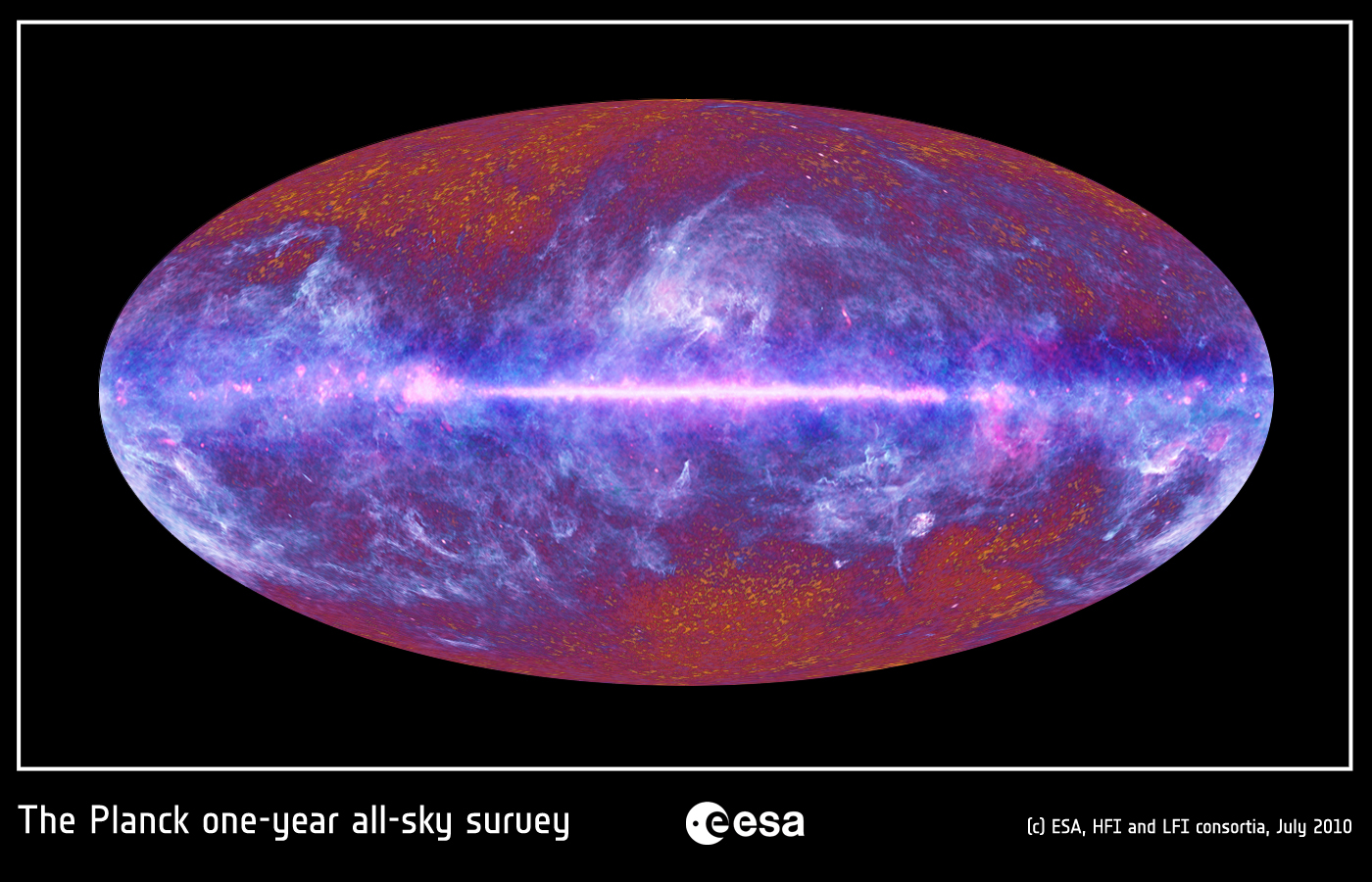The European Space Agency has just released the first all-sky map from the Planck satellite. The centre of the map is dominated by purple swirls from the dust around our Galaxy, but Planck’s main business is to look closely at the blobby structures visible in the map’s outer regions. These ‘blobs’ show temperature fluctuations in the Cosmic Microwave Background (CMB), the remnant radiation from the Big Bang. Irregularities in the CMB became the seeds of today’s galaxies.

The fluctuations in the background radiation were first mapped by NASA’s COBE satellite, launched in 1989. An instrument on board also measured the CMB’s spectrum. FIRAS’s moving mirrors created interference patterns in a radiation beam, enabling the precise spectrum to be reconstructed. To the delight of scientists, the results perfectly matched the predictions of Big Bang theory.

The FIRAS prototype is on loan to us from the kind folks at the Smithsonian Institution’s National Air and Space Museum in Washington DC. NASM’s display about the 1964 discovery of the microwave background features one of my favourite objects in any museum, anywhere. Arno Penzias and Robert Wilson initially thought that an annoying background hiss from their radio antenna was caused by pigeon droppings, and used this trap to try and capture the pesky critters. It turned out they’d accidentally found what other scientists had been looking for – the Big Bang’s echo.